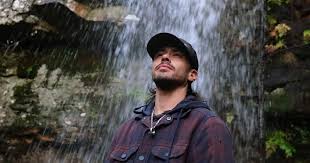Portugal Is at war with itself over ‘white gold’

Covas Do Barroso: For centuries, Aida Fernandes’ family has lived in this village nestled in the rugged mountains that crown the northern border with Spain, with generation after generation grazing cattle and growing grapes in lush green fields.
Then, in 2010, a wildfire — one of the growing number of blazes scorching this part of Europe as the climate changes — engulfed the verdant foothills encircling Fernandes’ ancient home.
The rustic stone houses and towering persimmon trees of Fernandes’ remote town of about 100 people remained intact, but there was plenty of damage to the surrounding area. With time, though, the wounded landscape healed. Dense stands of maritime pines regrew to cover the charred bare ridges. Enough Erica lusitanica, or Portuguese heath, sprouted between the skinny evergreens’ trunks to make the ground look like brushstrokes in an impressionist painting. Wild fruit trees returned, bearing juicy berries with red skin and yellow meat that locals call medronheiros and ferment into alcohol. The culture, too, showed signs of a rebound, as the region’s unique farming traditions and indigenous livestock breeds made it one of the only places in Europe to win a spot on a worldwide list of “agricultural heritage systems” worthy of conservation.
But around that same time, Fernandes registered a new threat to her land — one that, while slower-moving, could change things forever. It came not from a “what” but a “whom”: an invasion, with huge ramifications for Europe’s climate goals and Portugal’s political stability.
With the help of the national government, the lithium mining industry promises to transform this forgotten region into the European Union’s largest operation for digging the metal ? prized for its role in electric vehicles ? out of the earth. More prospectors were arriving by the month to bore cylindrical holes into rock and take samples. As time went on, Fernandes accused workers of trespassing on land where they had no legal rights, an allegation the mining company denied.
Seemingly overnight, Fernandes, 45, became the de facto leader of the resistance, a self-described David leading a ragtag coalition of farmers, environmentalists and itinerant hippies. They were up against the twin Goliaths of an international corporation and the Portuguese state, with backing from at least a handful of villagers who believed mining would mean a financial boost for themselves and their region.
One Friday in November, Fernandes’ new responsibility — an exhausting third job on top of farming and raising three kids — meant going on patrol to check whether the prospectors were advancing. Peering at the horizon through the dusty windshield of her red Toyota pickup, she spotted a single plume of white smoke. Fernandes let out something between a gasp and a sigh.
“They’re here,” she said.
Roughly 200 feet down the ridge, a crew of three hard-hatted workers made use of the waning daylight to dig a little deeper into the exposed rock, casting up a continuous puff of diesel exhaust and dust.
Men had been showing up on lands owned collectively by the villagers for months. Fernandes and her cohort tried blocking the road when they saw them coming, but this afternoon she was too late. More workers were coming more often, with armed police not far behind — an intimidating sight for residents who lived through the fascist dictatorship that ruled Portugal from the Great Depression until the 1970s.
The industry is in a Catch-22. Lithium is the main component in the power packs that propel electric vehicles and store energy from weather-dependent renewables, like wind and solar, for later use. Investors hoping to cash in on the transition from fossil fuels to batteries and electricity call it “white gold.”
Consumers in rich parts of Europe and North America demand products made with metals unearthed with minimal environmental damage, but have literally stood in the way of mines in countries with some of the highest regulatory standards in the world. Even under optimistic scenarios for how much metal recycling can recirculate into the battery supply chain, analysts say both continents need to mine more raw lithium ? and officials from Washington to Brussels are dangling new incentives for companies to do so. Yet Savannah Resources, the mining company pursuing the lithium under Covas do Barroso, finds itself fending off villagers’ lawsuits in local court in Portugal.
New legal cases “coupled with the increased stream of negative media coverage in the second half of the year are a cause for ongoing frustration,” Matthew King, Savannah Resources’ chairman, wrote in a year-end letter to investors in December. “However, we will continue to communicate the positive benefits of our project for the local community, Portugal and indeed Europe as a whole, and our efforts to minimise any and all negative impacts it may have.”
Tensions were growing. Temperatures were surging. Fernandes was staring down the plans that some of the world’s most powerful governments and financiers had for her tiny, ancient village. And time was running out. With final mining permits still pending, the only question was: For whom?
There is a lot of “white gold” in the hills around Covas do Barroso. There’s enough, according to the British mining company paying the prospectors to drill rock samples of the landscape, to manufacture nearly 600,000 electric vehicles annually — more than three times the number of new cars sold in Portugal in a good year.
Someone just needs to dig the yellowish spodumene rocks out of the ground, cart them away, crush the ore, roast and chemically treat the dust, and eventually sell the resulting lithium concentrate to any of the dozens of battery factories under construction across Europe.
London-based Savannah Resources wants to be that someone. This year, the company, which said it has the rights to 93 hectares of land — roughly 230 acres, sold by more than 40 local landowners — around the village already, is set to finish its permitting process. Next year, the firm is scheduled to start the real work on opening its Barroso mine, and plans to build a chemical plant next to the open pit to process the ore in-house.
By the end of the decade, Savannah envisions remaking this region into a key node in the clean-energy supply chain the European Union and the United States are banking on to free their economies of both carbon emission and China, which controls the vast majority of the world’s production of metals for batteries and solar panels.
“The Barroso Lithium Project is one of the most strategically important lithium projects in Europe, and we are delighted to be progressing so well,” the company said in an email to HuffPost.
The European Union currently uses 230,000 metric tons of lithium per year, but the energy consultancy Benchmark Minerals forecasts that demand will more than triple to 700,000 metric tons by 2030. The EU enacted its Critical Raw Materials Act just last month, setting ambitious targets for how much lithium the bloc aims to mine and process within its own borders.





